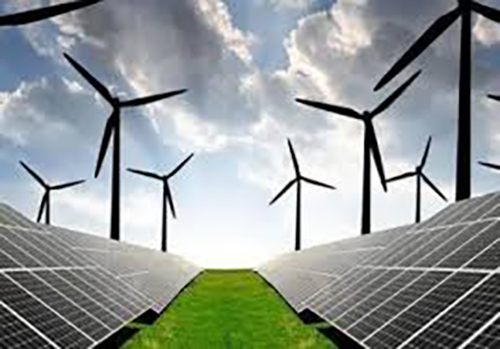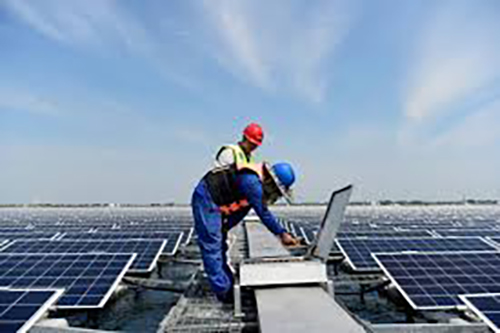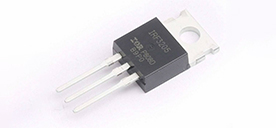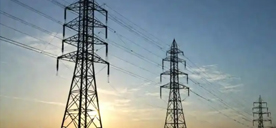Photovoltaic power generation: development bottlenecks and technological breakthroughs
2024/5/9 11:31:42
Views:

As one of the most promising renewable energy technologies in this century, photovoltaic power generation has attracted much attention for its clean, environmentally friendly and renewable characteristics. However, no technology is perfect, and photovoltaic power generation also faces some obvious challenges and shortcomings, which limit its large-scale application and commercial promotion. This article aims to deeply explore the disadvantages of photovoltaic power generation, as well as the technical bottlenecks and market challenges reflected by these disadvantages.
1. Affected by weather, power generation is unstable
The core principle of photovoltaic power generation is to use solar panels to convert sunlight into electrical energy, but this conversion process is directly affected by the time and intensity of sunlight. On days with continuous rain or thick clouds, the power generation efficiency of photovoltaic panels will decrease significantly, resulting in unstable power output. This instability is a huge challenge for grid systems that rely on stable power supply. In addition, seasonal changes can also lead to fluctuations in photovoltaic power generation. For example, the short sunshine hours in winter will greatly reduce the power generation capacity of photovoltaic panels.
2. Low use rate and poor average exposure

3. Energy storage is difficult and limits large-scale use.
Since photovoltaic power generation is restricted by weather conditions, its power output is intermittent and uncontrollable. In order to achieve a continuous supply of electricity, an energy storage system must be equipped to store excess electricity. However, the current development of energy storage technology is far from meeting the needs of large-scale photovoltaic power generation. Traditional battery energy storage technology has problems such as high cost, short life, and low efficiency. While emerging energy storage technologies such as flow batteries and compressed air energy storage have potential, they have not yet been commercialized. Therefore, the energy storage problem has become one of the bottlenecks in the large-scale application of photovoltaic power generation.
4. The cost of electricity is comparatively high, and the initial investment is substantial.
The construction and installation of photovoltaic power generation systems requires high initial investment, including the purchase of solar panels, inverters, brackets, cables and other equipment, as well as installation and maintenance costs. Although the cost of photovoltaic equipment is gradually decreasing with the advancement of technology and the effect of scale effect, the initial investment of photovoltaic power generation is still high compared with traditional fossil energy power generation. This makes the electricity price of photovoltaic power generation relatively high, making it difficult to compete with traditional energy power generation. In addition, since the life of photovoltaic equipment is limited, generally around 20-30 years, the replacement and update costs of the equipment need to be considered.
5. High production process requirements and high pressure on environmental protection
The production process of photovoltaic cells involves many links, including the purification of silicon materials, silicon wafer cutting, cell manufacturing and component packaging. These links have high requirements on production processes and require the use of some high-energy-consuming, high-pollution equipment and materials. For example, the purification process of silicon materials will produce a large amount of waste water and waste gas, which will put a certain amount of pressure on the environment. In addition, the recycling and processing of photovoltaic cells is also an urgent problem that needs to be solved. A complete recycling system has not yet been established, and discarded photovoltaic cells may pose a potential threat to the environment.
6. Technology updates rapidly and it is difficult to adapt to the market
Photovoltaic power generation technology is in a stage of rapid development, and new technologies, materials and equipment are constantly emerging. This rapid technological update brings challenges to the market. On the one hand, enterprises need to continuously invest in R&D funds to adapt to new technological trends and market demands; on the other hand, consumers and investors also need to constantly learn new knowledge and understand the characteristics and advantages of new technologies. The marketing and use of solar power generation are somewhat constrained by this adaptation issue.
Including improving the efficiency of photovoltaic cells, reducing equipment costs, improving energy storage technology, optimizing the grid structure, strengthening environmental protection supervision, etc. At the same time, enterprises need to increase investment to promote the research and development and innovation of photovoltaic power generation technology and inject new impetus into the development of renewable energy. Only in this way can we overcome the shortcomings and challenges of photovoltaic power generation and achieve its widespread application and sustainable development around the world.
Related Information
-
-
Phone
+86 135 3401 3447 -
Whatsapp





